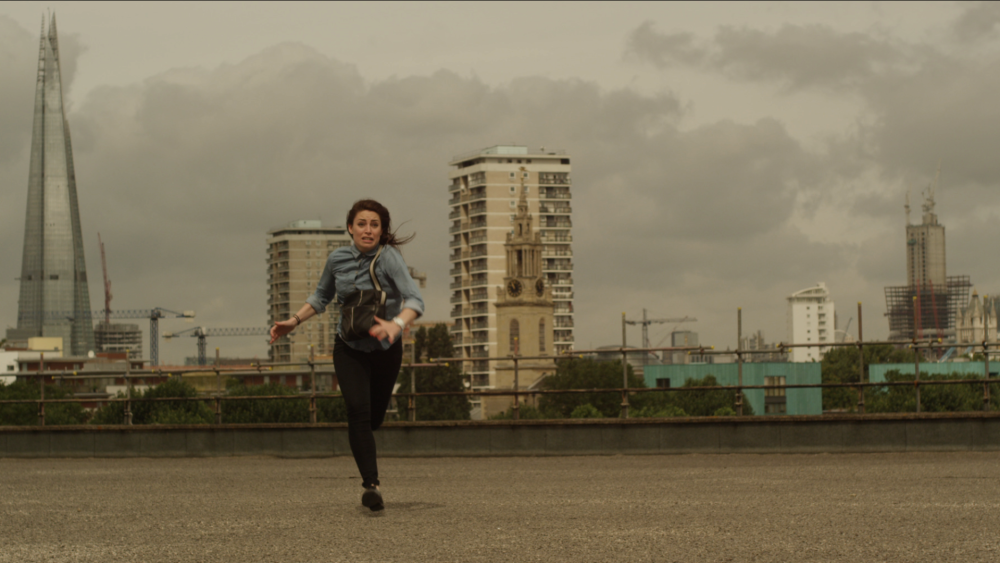Color grading effects are for giving your project a unique visual style.
Bleach Bypass ![]()

Bleach Bypass simulates the harsh, high contrast look of bleach bypass film processing. Often used for war movies. Bleach bypass takes its name from a technique used to develop color film stock. By skipping the bleaching step in the development process, the silver in the film emulsion is retained, resulting in a black-and-white image laid over the color image. The final image has reduced saturation, and increased contrast and graininess.
- Amount: The intensity of the Bleach Bypass effect applied to your source video.
- Brightness: Adjusts the brightness of the video. Actual film is typically shot 1 stop underexposed to prepare for bleach bypass processing, to compensate for the brightening that occurs during the process. This slider allows you to compensate for the brightness of your source video to get the result you want.
- Silver Source: You can change the source used to create the Silver map used by the bleach bypass here. Choose the Intensity of the image, the Luminosity of the image, or the Lightness of the image. This is a case where its best to just try the options, and see which one gives the most pleasing result.

Cine Style ![]()

Using an s-curve shift, cine style creates a cinematic, Hollywood-style look. It is a fast method for achieving a professional, high quality finish. While it offers a rapid grade, it still provides controls for fine tuning the appearance. Cine style includes built-in Grain, Vignette and Letterboxing features. These can be turned on or off independently, to create your desired final look.
- S-Curve: Adjusts the contrast of the image, by applying an s-curve based on the Curves effect.
- Color Adjustment: Controls the color shift applied to the image, which boosts contrasting colors, By default, it pushed toward the teal and orange palette popular in Hollywood blockbusters, but this can be changed using the Color Adjustment Settings below.
Color Adjustment Settings
- Shift:
- Hue: The primary hue toward which the color will be shifted.
- Exposure: Adjust the exposure of the image. Use this control and the S-Curve control to find the balance of contrast and brightness that you need.
- Saturation: Increases the color intensity within the image.
2.35:1 Letter Box
Cinematic films often use a wider aspect ratio than standard 16:9 video cameras. You can add a Letter Box to your video to give it a more cinematic look.
- Enabled: Toggles the letterbox on and off.
- Offset: Adjusts the vertical position of the video, so you can ensure the most important elements of the frame are visible within the letter box.
Grain
The film stock which was used traditionally on Hollywood films, and from which films take their designation, often has a characteristic grain which is often lacking in video. Adding subtle grain can help your video have a more filmic appearance.
- Enabled: Toggles the Grain on and off
- Amount: The intensity of the Grain effect.
- Size: The size of the grain. Grain is generally of a similar size, but its size relative to the frame will vary based on the size of the film. So grain in 8mm film will appear larger than grain in 35mm film. Adjust the size here to get the look you are after.
- Monochrome: Toggles between full color grain and grain that is black and gray only.
- Seed: Each seed gives a different random pattern to the grain.
Vignette
Some camera lenses cause a vignette distortion which darkens the corners of the frame. These controls can be used to simulate that look, or simply to bring more focus to the center of the frame by darkening the edges.
- Enabled: Toggles the Vignette on and off.
- Center
- Position: By default the vignette is centered on the frame, but you can reposition the center anywhere within the frame
- Use Layer: This menu allows you to select any other layer on the timeline, and use its position coordinates as the cneter of the vignette.
- Horizontal Stretch: Adjusts the width of the vignette.
- Vertical Stretch: Adjusts the height of the vignette.
- Softness: Controls the width of the feather applied to the edges of the vignette.
- Curvature: Changes the radius used in the corners of the vignette effect
- Opacity: Adjusts the transparency of the image within the vignette
- Background
- Opacity: Adjusts the opacity of the vignette color applied to the image.
- Color: Select the color which will be used by the vignette. Black is the default.
Color Vibrance ![]()
This effect is ideal for adding color to greyscale, procedural effects such as particles and textures. Here is a grayscale fiery planet created using a combination of fractal noise and sphere effects inside HitFilm:
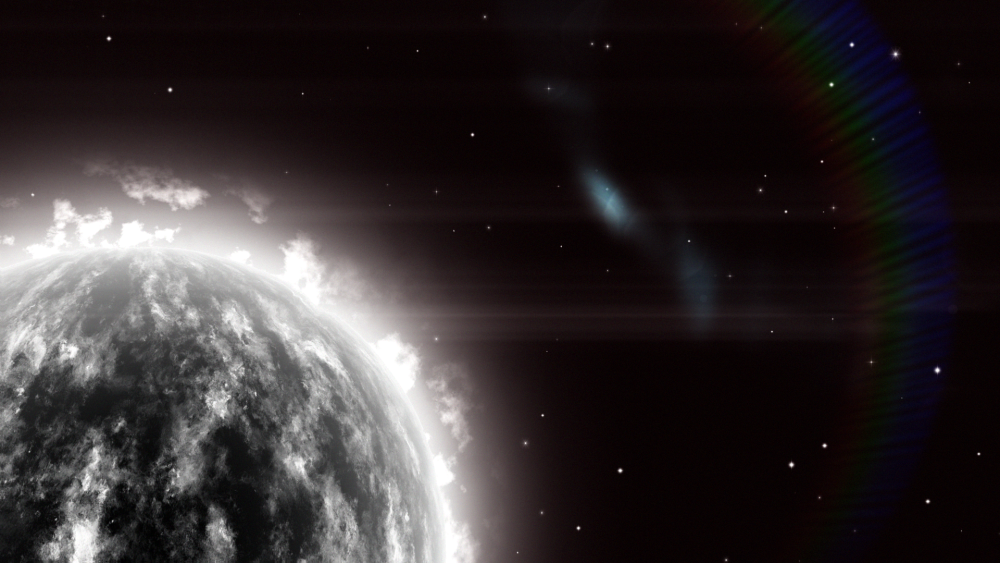
Here’s the same shot with color vibrance applied:
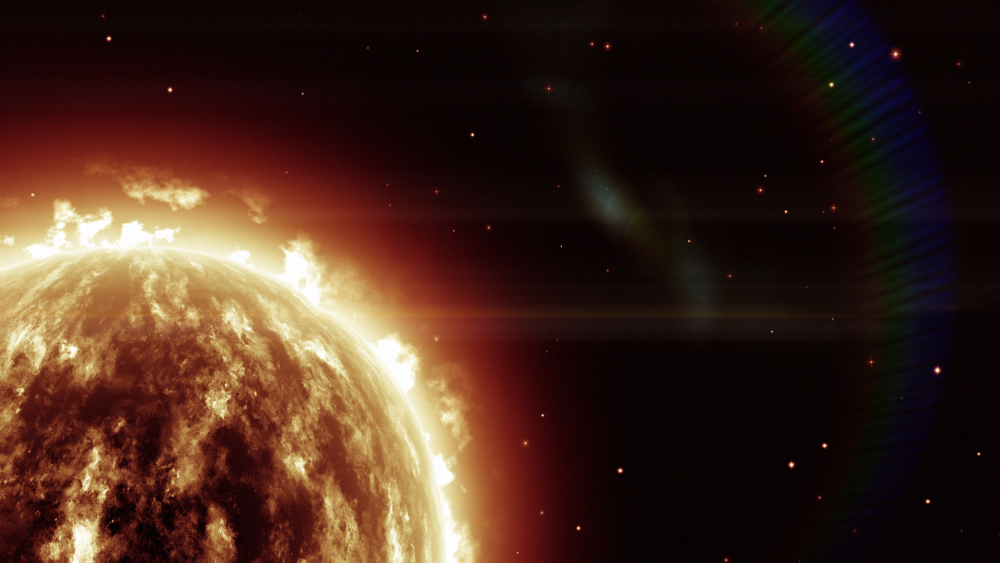
Color vibrance is particularly effective at retaining detail in bright areas without creating excessive bloom. The strength of the vibrancy and the luminance preservation can be adjusted, as can the color and phasing of the effect.
- Preset: Several presets are provided which can be used as starting points for your adjustments.
- Color: Select the base color which will be applied to the layer.
- Vibrance: Sets the intensity of the colorization.
- Phase: Shifts the hue of the colorization.
- Preserve Luminance: Defines how much the total luminance of each pixel is affected by the colorization. Higher values retain more of the original luminance, while lower values allow the added color to alter the luminance value if necessary.
- Exposure: Brightens or darkens primarily the highlights of the image, with minimal effects on the shadows.
- Offset: Brightens or darkens the shadow areas of the image, with minimal effects on the Highlights. Start with minor adjustments, as excessive changes here can create unnatural results.
- Gamma: Brightens or darkens the midtones of the image.
- Invert: Inverts the color values of the colorized image.
- Generate Matte: Creates a matte based on he colorization.
Day for Night
A quick way to convert a shot filmed in the day to having the appearance of being filmed at night. Day for Night applies a gradient based on the Horizon property, with separate controls for the near and far areas.
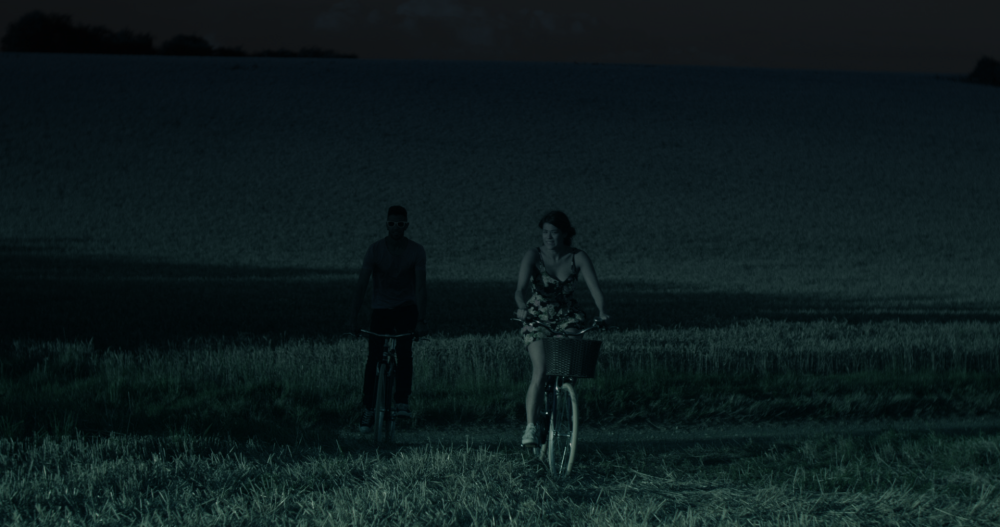
- Horizon: Sets the position of the horizon line, dividing the Near colorization and Far colorization of the image.
Near
The Near controls are used to set the appearance of your subject and foreground; the area below the horizon line, which will often have a blue cast for a night scene.
- Red Gamma: Defines the amount of red in your foreground.
- Blue Gamma: Defines the amount of blue in your foreground.
- Brightness: Increases or decreases the brightness of your foreground.
- Saturation: Adjusts the intensity of the color in the affected image.
Far
The Far controls alter the area above the horizon, which should usually be quite dark for a convincing night scene.
- Gamma: Adjusts the darker areas of the background.
- Brightness: Adjusts mainly the brighter areas of the background.
- Hue: Selects the hue toward which the background will be tinted.
Duo Tone ![]()
Creates a two tone look, based on two specified colors. A gradient from one color to the other is mapped onto the tonal range of the image.
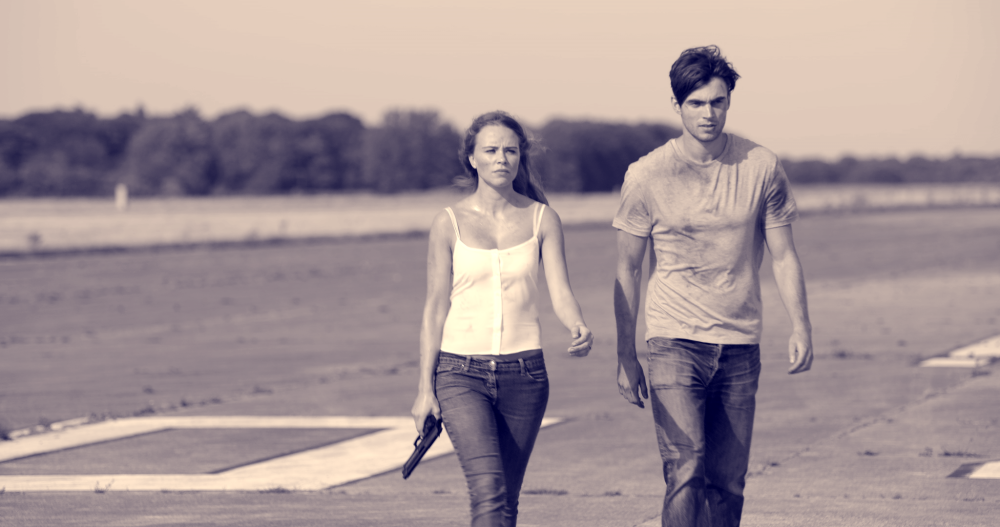
- Preset: Choose from a variety of preset color combinations.
- Color 1: Choose the color to be mapped onto the highlights of the image. Click the swatch to open a color picker and chose any color. You can also use the eyedropper to select a color from the Viewer, or manually enter the RGB values for your desired color.
- Color 2: Choose the color to be mapped onto the shadows of the image. Click the swatch to open a color picker and chose any color. You can also use the eyedropper to select a color from the Viewer, or manually enter the RGB values for your desired color.
- Invert: Inverts Color 1 and Color 2. If you realize you need to swap the colors, you can do so easily with this toggle.
- Threshold: Shifts the mid-point of the gradient, to adjust the location of the color split in the image’s brightness range.
- Softness: Adjusts the overall contrast of the altered image.
- Blend With Original: Combines the duo tone effect with the original colors of the image. The percentage indicates how much of the original image is included.
- Brightness Used: Select the channel that will be used to determine the brightness and map the Duo Tone onto the original image. Choose between Intensity, Lightness, or Luminosity.
Grading Transfer ![]()

Matches the look of one layer to another layer. This is a quick way to grade based on an existing source. The transferred grade can then be further customized, either globally or within specific tonal ranges.
Global Transform
Adjusts the entire layer as a whole, affecting all tonal ranges equally.
- Brightness Shift: Controls how much of the selected layer’s brightness is transferred.
- Chrominance Shift: Controls how much of the selected layer’s color data is transferred.
Shadow Transform
Adjusts the darkest values of the layer, without altering the mid-tones or highlights.
- Brightness: Controls how much of the selected layer’s brightness is transferred in the shadow areas.
- Chrominance: Controls how much of the selected layer’s color data is transferred in the shadow areas.
Midtones Transform
Adjusts the middle tonal values of the layer, without altering the shadows or highlights.
- Brightness: Controls how much of the selected layer’s brightness is transferred in the mid-tone areas.
- Chrominance: Controls how much of the selected layer’s color data is transferred in the mid-tone areas.
Highlights Transform
Adjusts the brightest values of the layer, without altering the shadows or mid-tones.
- Brightness: Controls how much of the selected layer’s brightness is transferred in the highlight areas.
- Chrominance: Controls how much of the selected layer’s color data is transferred in the highlight areas.
Hue Colorize
Applies a single user-selected hue to the layer. The tonal value of each pixel is retained, and only the hue is adjusted.

- Preset: Choose from a variety of hue presets as a starting point.
- Hue: Select any hue on the color wheel, by shifting the angle of the wheel.
- Hue Strength: Adjust how far the original color is shifted toward the selected hue.
- Saturation: Changes the color intensity of the colorized image.
- Lightness: Changes the lightness of the colorized image.
Hue Shift
Moves the entire color spectrum of the layer through different hues.
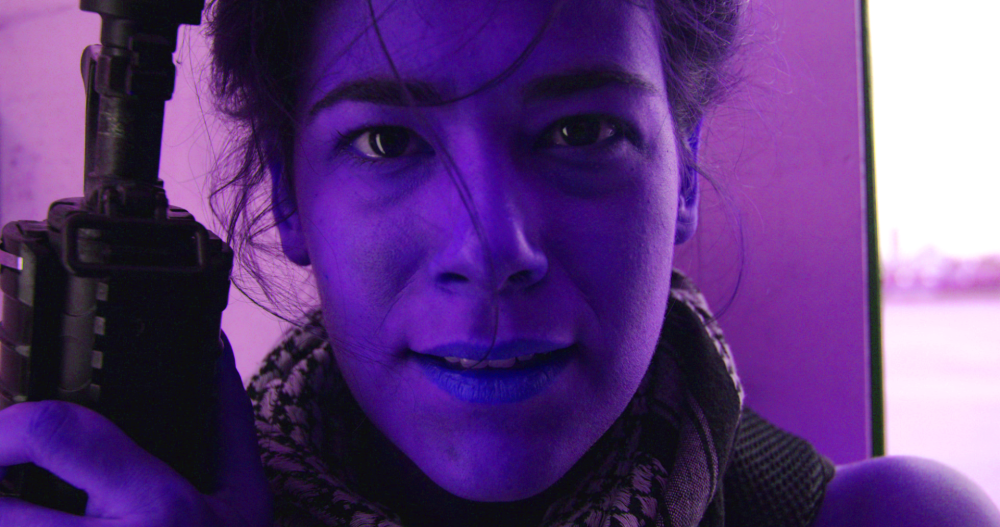
- Preset: Choose from a variety of hue presets as a starting point.
- Hue Shift: Adjust how far the original colors are shifted around the color wheel.
- Saturation: Changes the color intensity of the colorized image.
- Lightness: Changes the lightness of the colorized image.
LUT ![]()

LUT files are used to transform color values, which helps to ensure accurate color correction across multiple software and hardware setups. LUT also provides a powerful way to provide a one-click grade, simulating specific film stocks and processing techniques. Applying a LUT to flat footage can produce high quality results very quickly.
The LUT effect can import .cube LUT files.
Take a look at this comparison:
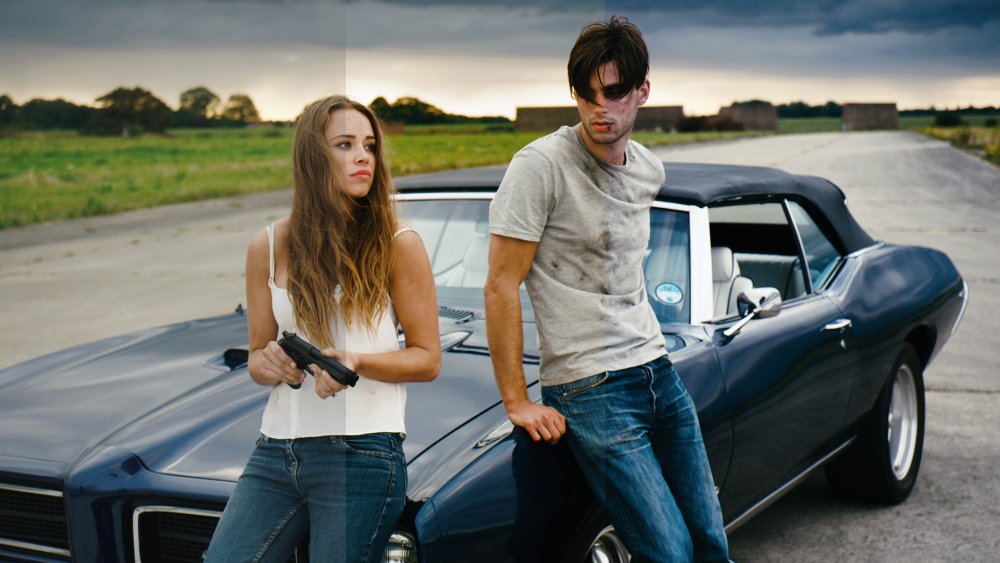
On the left is the original footage, which was purposely shot to be ‘flat’, providing a neutral starting point for the grade.
The middle image is using a LUT designed to mimic the look of KODACHROME film. The only additional alteration I’ve made is to slightly reduce the saturation. In about 10 seconds I went from a basic flat look to a highly dramatic and filmic grade.” Find out more about KODACHROME and grab the LUT here.”:https://frankglencairn.wordpress.com/2014/01/15/everything-looks-better-on-kodachrome-k-tone-lut/
The image on the right is using a Kodak 2393 emulation LUT, Again, we achieve a good film look with literally a couple of clicks, and note how different this look is to the KODACHROME. You can download several film emulation LUTs and find some great behind-the-scenes info here.
Using LUTs
1. Add the LUT effect to your timeline object.
2. In the controls for the LUT effect, click the Folder icon 
3. In the File browser that opens, navigate to the .cube file that you wish to use, and select it.
The LUT will be applied to your layer, and the path to its location will be shown in the effect controls.
Shadows & Highlights ![]()

Provides fine control over the visible detail in the extremes of the layer’s tonal range.
- Shadow Amount: Raises the tonal value of the shadow areas, to reveal detail that is hidden in the shadows.
- Highlight Amount: Lowers the tonal value of the highlight areas, to reveal detail that is blown out.
Shadow
- Tonal Width: Determines the range of tones that will be included in shadow adjustments. Higher values will include more midtones and brighter areas.
- Radius: Defines how many surrounding pixels will be averaged in when adjusting shadow areas.
- Black Clip: Pushes all areas at or below the selected tonal value to pure black.
Highlight
- Tonal Width: Determines the range of tones that will be included in highlight adjustments. Higher values will include more midtones and darker areas.
- Radius: Defines how many surrounding pixels will be averaged in when adjusting highlight areas.
- Black Clip: Pushes all areas at or above the selected tonal value to pure white.
- Color Correction: In areas where colors are pushed to high levels of saturation by the adjustments, this brings the colors down toward more natural values.
- Midtone Correction: Shifts the midtones of the image to make them brighter (right) or darker (left).
- Blend With Original: Combines the adjustments with the original colors of the image. The percentage indicates how much of the original image is included.
Three Strip Color
Simulates the three strip Technicolor film process commonly used in the early days of color film, resulting in richer, deeper colors.
- Preset: Use the menu to choose from several preset starting points.
- Red Strength: Adjusts the intensity of the Red channel of the image.
- Green Strength: Adjusts the intensity of the Green channel of the image.
- Blue Strength: Adjusts the intensity of the Blue channel of the image.
Two Strip Color
Simulates the two strip Technicolor film process. More information on the process can be found in this article on Wikipedia
In the original process, a black and white negative was used, and a prism beam-splitter behind the camera lens exposed two consecutive frames simultaneously, one behind a red filter, the other behind a green filter.
After development, each print was dyed to a complimentary color of the filter used: red for the green-filtered images, cyan for the red-filtered ones. The highlights would remain clear, dark areas would be strongly colored, and intermediate tones were colored proportionally. The two prints, made on film stock half the thickness of regular film, were then cemented together back to back to create a projection print. This process is simulated in the Two Strip color effect.
- Preset: Several presets are included as starting points.
- Red Filter: Choose the color of the red prism.
- Green/Blue Filter: choose the color of the green prism.
- Red Dye: Choose the color of the dye applied to the image created by the green prism, which should be complimentary and is Red by default.
- *Cyan Dye:*Choose the color of the dye applied to the image created by the red prism, which should be complimentary and is Cyan by default.
- Brightness: Adjusts the overall brightness of the modified image.
- Saturation: Adjusts the color intensity of the modified image.
- Offset Darks: Slide left to intensify shadows, or shift right to lessen the shadow intensity.
Vibrance ![]()
Adds pop to your image, emphasizing edge detail by increasing local contrast. To generate the result, the effect first generates a temporary copy of your image with inverted colors. Then, this inverted image is blurred and mixed with the original. The result of that mixing is then applied to the original image using a ‘soft light’ blend mode.
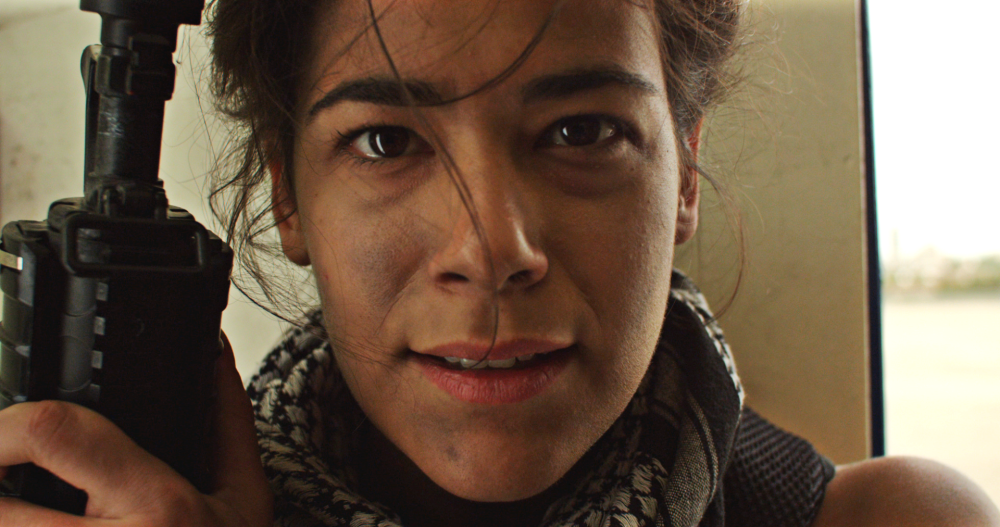
- Radius: Sets the radius of the blur applied to the inverted copy.
- Intensity: Adjusts the mix ratio of the original image and the inverted copy. Higher values use more of the inverted copy, lower values use more of the original image.
- Iterations: The number of times the effect is applied. Higher values intensify the results.
Vignette
Adds a colored overlay to the edges of the layer. You can customize the color, shape and softness of the vignette.
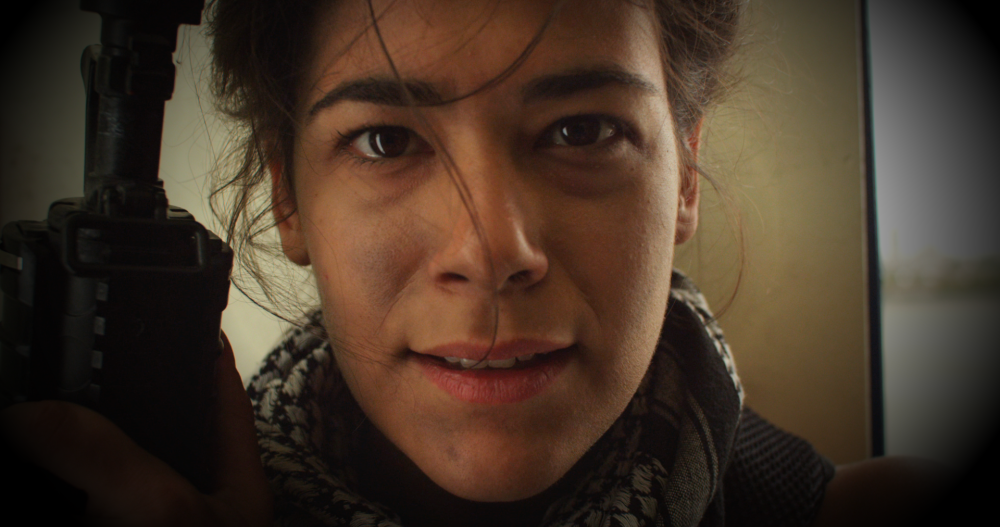
- Preset: Several presets are available as starting points of varying intensity.
- Vignette Center: By default the vignette is centered in the frame, but you can reposition the center if you wish.
- Position: Sets the exact location of the vignette center, using X and Y values.
- Use Layer: Select any other layer on the timeline to use it’s position as the center of the vignette. When a layer is selected, the Position property above functions as an offset from the selected layer’s position.
- Width: The width of the vignette’s bright center, in pixels.
- Height: The height of the vignette’s bright enter, in pixels.
- Horizontal Stretch: Adjusts the width of the vignette.
- Vertical Stretch: Adjusts the height of the vignette.
- Softness: Defines the distance from the center to the start of the feather.
- Curvature: Shifts the distance from the center to the mid-point of the feather. Lower values give a mire subtle effect.
- Strength: Sets the intensity of the vignette.
- Color: Choose the color used for the surrounding area that creates the vignette.
- Alpha: Adjusts the opacity of the vignette color.
- Color: Choose the color to be used for the vignette. Click the swatch to open a color picker and chose any color. You can also use the eyedropper to select a color from the Viewer, or manually enter the RGB values for your desired color.
Vignette Exposure ![]()
This alternate vignette effect adjusts the exposure of the edges of the frame, instead of applying an overlay. This can produce a subtler and more natural vignetting result. The vignette can also be pushed brighter, which creates a halo effect or can be used to counteract unwanted vignetting in the source footage.
- Amount: Sets the exposure of the vignette. Positive values brighten the exposure, and negative values darken the exposure.
- Mid-point: Sets the distance from the center of the effect to the mid-point of the gradient.
- Center: By default the vignette is centered in the frame, but you can reposition the center if you wish.
- Position: Sets the exact location of the vignette center, using X and Y values.
- Use Layer: Select any other layer on the timeline to use it’s position as the center of the vignette. When a layer is selected, the Position property above functions as an offset from the selected layer’s position.
Stretch
- Global: Adjusts the overall size of the gradient.
- Horizontal: Adjusts the width of the vignette.
- Vertical: Adjusts the height of the vignette.
- Rotation: Rotates the vignette from its default angle.

